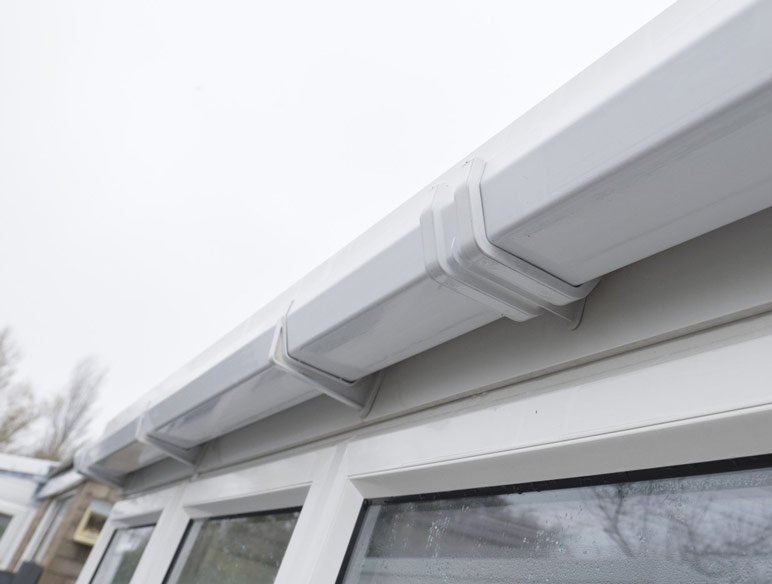Navigating UK Asbestos Regulations: A Property Owner's Guide to Roof Maintenance
Property ownership in the UK comes with unexpected responsibilities, particularly when dealing with buildings constructed before 2000. With an estimated 1.5 million buildings still containing asbestos materials, understanding your legal obligations isn't just about compliance—it's about protecting lives and avoiding substantial penalties.
Understanding Your Legal Position as a Property Owner
The Control of Asbestos Regulations 2012 (CAR 2012) fundamentally changed how property owners must approach asbestos management. Unlike previous legislation that focused primarily on removal, these regulations establish ongoing management as the cornerstone of asbestos safety. This represents a crucial shift in thinking: asbestos becomes the property owner's responsibility to manage, not simply a problem to eliminate.
The concept of the "duty holder" sits at the heart of CAR 2012. If you own or have responsibility for maintaining non-domestic premises, you are likely a duty holder under Regulation 4. This applies to commercial properties, industrial buildings, communal areas in residential blocks, and even some mixed-use properties where business activities occur. The regulations don't distinguish between large corporations and individual landlords—the obligations remain identical regardless of portfolio size.
What surprises many property owners is that ignorance provides no defence. The regulations explicitly state that duty holders must "take reasonable steps" to determine whether asbestos is present. This means you cannot simply assume your property is asbestos-free or wait until renovation work reveals its presence. The obligation is proactive, not reactive.
Interestingly, purely domestic premises—single-family homes occupied by their owners—fall outside CAR 2012's scope. However, the moment you let that property, convert part of it for business use, or employ tradespeople for maintenance work, you acquire duty holder responsibilities. This grey area catches many landlords unprepared, particularly those with small residential portfolios who may not consider themselves "commercial" operators.
The Three-Tier System for Asbestos Work
Understanding how the HSE classifies asbestos work proves essential for determining what maintenance activities you can legally undertake and what requires specialist contractors. The classification system operates on a risk-based approach, with exposure potential and material condition determining which category applies.
Non-licensed work encompasses the majority of asbestos cement roof maintenance activities. This includes cleaning, minor repairs, and routine inspection where the material remains in good condition and disturbance is minimal. The HSE defines non-licensed work as sporadic, low-intensity activities where exposure stays below 0.1 fibres per cubic centimetre averaged over four hours. Crucially, whilst this work doesn't require HSE licensing, it's not unregulated. Workers must still receive appropriate training, use correct safety measures, and follow established procedures for containing and disposing of any waste generated.
The assumption that "non-licensed" means "anyone can do it" represents a dangerous misunderstanding. The regulations require those undertaking non-licensed asbestos work to be competent, which includes understanding the risks, knowing how to work safely, and recognising when a job exceeds their capability. For roof maintenance, this typically means engaging contractors with Category B training rather than general builders or handymen.
Notifiable non-licensed work (NNLW) occupies the middle ground. This classification applies to work that involves more extensive asbestos disturbance but doesn't quite meet the threshold requiring full licensing. Examples include removing multiple asbestos cement sheets, repairing significant roof damage, or undertaking work where exposure might occasionally exceed the 0.1 fibres per cubic centimetre threshold but remains below 0.6 fibres per cubic centimetre over four hours. NNLW requires advance notification to the HSE (at least 14 days for initial notifications) and medical surveillance for workers.
Licensed work demands the highest level of control and applies to activities with significant asbestos disturbance potential. Complete roof removal typically falls into this category, as does any work with asbestos insulation or coating materials. Only contractors holding current HSE licences can legally undertake this work, and the licensing process is rigorous, involving detailed applications, regular audits, and strict ongoing compliance requirements.
The boundaries between these categories aren't always clear-cut, and this is where property owners often stumble. A job might start as non-licensed maintenance but discover unexpected damage that escalates it to notifiable or even licensed work. The regulations place responsibility on the duty holder to ensure work doesn't proceed beyond the appropriate classification without proper controls. This means you cannot hire a non-licensed contractor for what appears to be simple maintenance and then allow them to continue when the scope increases—doing so makes you liable for any regulatory breaches.
Creating and Maintaining Your Asbestos Register
The asbestos register represents more than bureaucratic paperwork—it's a living document that forms the foundation of your management strategy. Regulation 4 requires duty holders to maintain a written record of the location and condition of asbestos-containing materials, or evidence demonstrating that none are present.
Many property owners commission an asbestos survey and then file the report away, believing their obligation fulfilled. However, the regulations require something more dynamic. Your register must be readily accessible to anyone who might disturb the fabric of the building during their work. This includes maintenance contractors, utility workers, and even tenants undertaking alterations. Simply having a survey report in a filing cabinet somewhere doesn't satisfy this requirement—the information must be available at the point of need.
Effective registers include several key elements beyond basic location data. Photographic documentation helps workers identify specific areas without confusion. Material condition ratings using standardised scoring systems provide objective assessment of risk levels. Access information indicates how workers can safely reach areas for inspection without disturbing asbestos elsewhere. Risk assessments specific to common maintenance activities offer practical guidance for contractors.
The register should also document what doesn't contain asbestos, particularly in areas where materials might be confused with asbestos-containing products. Recording that the corrugated roof over the loading bay is modern fibreglass rather than asbestos cement prevents unnecessary precautions and delays when maintenance becomes necessary.
Digital registers offer advantages over paper systems, particularly for properties spread across multiple locations. Cloud-based management systems can provide contractors instant access to up-to-date information via smartphones or tablets whilst on-site. However, you must ensure backup systems exist—contractors cannot safely work if they cannot access the register due to technical failures.
Inspection Frequencies and What to Look For
The regulations don't prescribe specific inspection frequencies, instead requiring that duty holders monitor asbestos condition at intervals appropriate to the circumstances. This risk-based approach means inspection frequency should reflect material type, condition, location, and likelihood of disturbance.
For asbestos cement roofing in good condition with minimal access, annual visual inspections typically suffice. However, roofs showing signs of weathering, biological growth, or previous damage warrant more frequent attention—perhaps quarterly or even monthly monitoring during winter months when weather-related deterioration accelerates.
Inspections should assess several specific factors. Surface integrity remains paramount—look for areas where the cement matrix appears powdery, where the surface has become rough rather than smooth, or where the characteristic grey colour has faded to chalky white. These signs indicate cement breakdown that can lead to fibre release. Biological colonisation by moss, lichen, or algae requires documentation, as plant roots penetrate the surface and accelerate material breakdown. Storm damage, falling branches, or impacts from maintenance activities need immediate recording even if apparently minor, as asbestos cement brittleness increases with age and seemingly small impacts can cause significant internal cracking.
Water ingress around fixings deserves particular attention. Asbestos cement sheets typically fasten with steel or brass hook bolts through pre-drilled holes. Over time, these fixings corrode or work loose, creating gaps where water enters. The resulting freeze-thaw cycles cause cracking that may not be visible from ground level but substantially weakens the material. Inspectors should specifically examine areas around chimneys, valleys, and penetrations where flashing meets asbestos sheeting, as these junctions frequently fail first.
The inspection process itself must not create additional risks. Walking directly on asbestos cement roofing is dangerous both because of fall-through risk and potential material damage. Inspections should generally be conducted from ground level using binoculars or telescopic cameras for detailed examination. Where closer inspection proves necessary, proper access equipment including scaffolding or mobile elevated work platforms must be employed, with crawling boards used to distribute weight if roof access becomes unavoidable.
Documentation forms the crucial final step of any inspection. Photographs with date stamps provide objective evidence of condition changes over time. Standardised inspection forms ensure nothing is overlooked and create comparable records between inspections. Most importantly, documentation must feed back into the asbestos register, updating material condition ratings and triggering appropriate management responses when deterioration is detected.
When Cleaning Transitions to Regulated Work
Property owners frequently misunderstand when routine maintenance crosses into regulated asbestos work requiring specific controls. This confusion stems partly from the regulations themselves, which use exposure thresholds and risk assessments rather than simple lists of permitted and prohibited activities.
Consider moss removal from an asbestos cement roof, a common maintenance requirement. If the moss growth is light and can be removed using low-pressure water and soft brushing whilst maintaining a wet surface, this likely constitutes non-licensed work appropriate for trained contractors using standard safety measures. However, if the moss has become deeply established, with roots penetrating the cement matrix such that removal requires scraping or aggressive treatment, the work character changes fundamentally. The increased material disturbance raises exposure risk, potentially moving the activity into notifiable territory or even suggesting that cleaning is inappropriate and alternative approaches like coating or replacement should be considered.
The material's pre-existing condition critically affects this assessment. Cleaning asbestos cement in good structural condition with intact surface presents minimal risk when using appropriate methods. Attempting to clean material that has already begun to deteriorate—where the surface has become friable, where cracking is visible, or where previous water ingress has weakened the structure, creates substantially higher risks that may render cleaning inadvisable regardless of technique.
This is where many property owners make costly mistakes. They contract general maintenance companies to "clean the roof" without specifying the material type or condition. The contractors arrive, assess the situation, and either proceed inappropriately (creating both health and legal risks) or refuse the job, leaving the property owner with an urgent maintenance need but no clear solution. The correct approach involves pre-work assessment by someone competent to recognise asbestos, evaluate material condition, and determine what work classification applies before any contractor is engaged.
The regulations place this assessment responsibility squarely on the duty holder. You cannot delegate this to contractors and then claim ignorance if work is conducted inappropriately. This doesn't mean you must personally possess technical expertise in asbestos management, but you must ensure competent assessment occurs before authorising any work to proceed.
The Hidden Costs of Non-Compliance
Whilst health protection provides the primary motivation for asbestos regulation compliance, the financial consequences of breaches deserve consideration. The HSE takes asbestos violations seriously, and penalties have increased substantially in recent years as courts recognise the severity of exposure risks.
Under the Health and Safety at Work Act 1974, breaches of asbestos regulations can result in unlimited fines. The Corporate Manslaughter and Corporate Homicide Act 2007 can apply in cases where gross negligence leads to death, with penalties including substantial fines and imprisonment for responsible individuals. The Sentencing Council's guidelines for health and safety offences now explicitly consider organisational size and culpability level, meaning deliberate breaches or repeated violations attract particularly severe penalties.
Recent prosecution cases illustrate the financial reality. In 2023, companies faced fines ranging from £20,000 for smaller breaches to over £1 million where serious exposure occurred or systemic failures were demonstrated. Individual directors and managers have received suspended prison sentences and disqualification from company directorship. These penalties typically far exceed the cost of proper asbestos management, making compliance economically logical even before considering ethical obligations.
Insurance implications add another financial dimension. Many commercial property insurance policies exclude or limit coverage for asbestos-related claims, particularly where the property owner knew or should have known about asbestos presence and failed to manage it properly. If asbestos contamination occurs due to improper maintenance and affects neighbouring properties or public areas, cleanup costs and third-party claims can easily reach six figures. Your insurance may provide no protection if you haven't fulfilled your duty holder obligations.
Property values also suffer from asbestos management failures. Buildings with unknown or poorly managed asbestos face devaluation, as purchasers must factor in survey costs, potential remediation expenses, and ongoing management obligations. Conversely, properties with comprehensive, up-to-date asbestos registers and documented maintenance histories often command premiums, as purchasers can proceed with confidence about their obligations and costs.
Practical Steps for Compliance
Translating regulatory requirements into practical action needn't be overwhelming, but it does require systematic approach. Property owners benefit from breaking the process into manageable stages rather than attempting everything simultaneously.
Initial assessment forms the essential first step. If you don't have a current asbestos survey for your property, or if your existing survey is more than five years old or predates significant building alterations—commission a management survey from a UKAS-accredited consultancy. These surveys cost £200-£1,000 depending on property size and complexity, representing money well spent for the peace of mind and legal compliance they provide. The survey will identify all accessible asbestos-containing materials, assess their condition, and recommend appropriate management strategies.
Register development follows survey completion. Don't simply file the survey report—extract the key information into an accessible format. Many duty holders create simple floor plans annotated with asbestos locations, coupled with photographic records and material condition summaries. This information should be available at the property entrance or reception area where contractors can access it before commencing work. Digital versions accessible via QR codes or online portals provide modern alternatives whilst maintaining paper backups for situations where technology fails.
Training and awareness extends beyond specialist contractors to everyone who might encounter asbestos. If you employ maintenance staff, they need asbestos awareness training at minimum, with refresher sessions annually. This training typically costs £20-50 per person for online courses or £50-100 for classroom sessions, representing minimal investment for significant risk reduction. Even reception staff benefit from basic awareness so they can direct contractors to asbestos information when they sign in.
Contractor management requires particular attention. Develop a pre-qualification process for any contractors working on your property. Require evidence of appropriate asbestos training (Category B minimum for those potentially working with asbestos materials), confirm insurance coverage specifically includes asbestos work, and request method statements before work commences. This documentation protects both you and the contractor by ensuring everyone understands the scope, risks, and control measures.
Maintenance planning should incorporate asbestos considerations from the outset. When budgeting annual maintenance, factor in regular inspections, periodic cleaning, and eventual replacement or encapsulation. Asbestos cement roofing has finite life expectancy—typically 30-50 years depending on quality and maintenance. Properties approaching this age range need long-term planning for replacement, particularly as deteriorating material becomes increasingly difficult and expensive to maintain safely.
Emergency procedures deserve attention before they're needed. What happens if storm damage occurs overnight, potentially disturbing asbestos roofing? Who will you call, and how quickly can they respond? Identifying specialist contractors in advance and understanding their emergency call-out terms prevents panic decisions when urgent situations arise.
The Role of Professional Asbestos Surveyors
Many property owners underestimate the value professional asbestos surveyors provide beyond initial material identification. UKAS-accredited surveyors bring expertise that extends to regulatory interpretation, risk assessment, and management strategy development.
When selecting a surveyor, accreditation matters significantly. UKAS (United Kingdom Accreditation Service) accreditation demonstrates that the organisation meets internationally recognised standards for competence, impartiality, and performance capability. Whilst non-accredited surveyors aren't legally prohibited from conducting asbestos surveys, using UKAS-accredited consultancies provides assurance that findings will withstand regulatory scrutiny if questions arise.
Different survey types serve distinct purposes, and understanding these differences helps property owners commission appropriate assessments. Management surveys, designed to locate asbestos materials that could be disturbed during normal occupancy and maintenance, typically suffice for occupied buildings under routine management. These surveys are minimally intrusive and assume the building will remain in use without major refurbishment.
Refurbishment and demolition surveys, by contrast, are fully intrusive and aim to locate all asbestos materials before major work commences. These surveys involve destructive inspection, removing ceiling tiles, drilling pilot holes in walls, lifting floor coverings, to ensure nothing is missed. Property owners planning significant alterations or eventual demolition need these more comprehensive surveys regardless of what management surveys previously identified.
Re-inspection surveys provide periodic updates on previously identified asbestos material condition without the expense of complete resurveys. Many UKAS-accredited consultancies offer these targeted assessments, examining known asbestos locations and updating condition scores without repeating the entire identification process. For properties with asbestos registers established through previous management surveys, re-inspection surveys offer cost-effective compliance with ongoing monitoring obligations.
Making the Encapsulation or Removal Decision
Eventually, most asbestos cement roofs reach a point where cleaning and routine maintenance no longer suffice. Understanding when this threshold arrives and what options exist helps property owners make informed, economically sound decisions.
Encapsulation involves applying specialised coating systems that seal asbestos cement surfaces, preventing fibre release whilst extending material lifespan. Modern encapsulation products, typically applied at around £33 per square metre, create robust barriers that can add 10-15 years to roof life when applied to materials in reasonable condition. This approach offers several advantages: it costs substantially less than removal, creates no asbestos waste requiring disposal, and causes minimal business disruption as work proceeds relatively quickly.
However, encapsulation isn't suitable for all situations. Materials with significant existing damage, extensive cracking, or structural weakness lack the integrity to support coating systems effectively. Encapsulation also commits you to ongoing monitoring, as coatings eventually degrade and require reapplication. Some property owners view this as indefinitely postponing the inevitable rather than solving the underlying issue.
Over-cladding represents another alternative gaining popularity for commercial and industrial buildings. This approach involves constructing a new roof structure above the existing asbestos cement roof, effectively isolating it without removal. Over-cladding eliminates immediate health risks, improves thermal efficiency, and avoids disposal costs whilst providing a modern, weatherproof roof. The existing asbestos remains in place but becomes inaccessible and protected from weather degradation.
The structural implications of over-cladding require careful consideration. Additional load from the new roof system necessitates structural engineering assessment to ensure the building can support the extra weight. Planning permission may be required depending on the structure's size and location. Long-term, the asbestos remains in place and must be managed if the building is eventually demolished, though this responsibility passes to future owners alongside appropriate documentation.
Complete removal provides the only permanent solution, eliminating the hazard entirely. For properties approaching their asbestos roofing's end of serviceable life, removal often makes economic sense despite higher upfront costs. Current removal costs average £50+ per square metre, with total project costs varying considerably based on roof size, complexity, and access considerations. A typical industrial unit might face removal costs of £10,000-£30,000, whilst larger commercial premises could exceed £100,000.
Licensed asbestos removal contractors undertake this work under strict HSE oversight. The process involves comprehensive containment, careful sheet removal without breakage, double-bagging of materials, and disposal at licensed hazardous waste facilities. Removal projects generate substantial volumes of waste, asbestos cement is heavy, and even small roofs produce multiple tonnes requiring proper disposal at £0.55-£0.80 per kilogram.
Understanding Insurance Implications
The relationship between asbestos and property insurance deserves more attention than most owners give it. Standard commercial property insurance policies typically provide limited or no coverage for asbestos-related claims, and understanding these limitations prevents unpleasant surprises when problems arise.
Most insurers explicitly exclude gradual pollution, which can encompass asbestos fibre release from deteriorating materials. If your asbestos cement roof gradually degrades and contaminates your property or neighbouring premises, standard cover likely won't respond. Some policies provide coverage for sudden and accidental pollution events, but defining whether roof damage and subsequent fibre release meets this threshold often becomes contentious.
Professional indemnity insurance for surveyors and consultants typically covers asbestos survey errors and omissions, but limitations and conditions apply. If you rely on an asbestos survey that subsequently proves inaccurate, your ability to recover losses from the surveyor depends on their insurance coverage and the specific circumstances of any errors.
Specialist asbestos insurance products exist for property owners managing asbestos-containing materials. These policies can cover remediation costs if contamination occurs, liability claims from third parties exposed to fibres, and business interruption resulting from asbestos incidents. However, these policies require demonstrated compliance with regulatory obligations—insurers won't cover losses resulting from deliberate non-compliance or gross negligence.
When purchasing or refinancing properties, lenders increasingly require specific asbestos warranties and indemnities. These might include guarantees that comprehensive surveys have been conducted, confirmation of ongoing management compliance, or indemnities covering remediation costs if undisclosed asbestos is later discovered. Understanding these requirements early in transaction processes prevents deal delays or collapse.
Record-Keeping Requirements
Meticulous documentation provides your best defence in the event of HSE investigations or claims resulting from alleged asbestos exposure. The regulations require maintenance of records for at least 40 years in some circumstances, reflecting asbestos-related disease latency periods.
Records should encompass all aspects of asbestos management. Survey reports obviously require retention, but equally important are inspection records showing regular monitoring compliance, training certificates for staff and contractors, method statements for any asbestos work undertaken, waste consignment notes confirming proper disposal, and correspondence with contractors and consultants.
Many property owners digitise historic paper records and implement cloud-based management systems for new documentation. This approach provides redundancy, ensures records survive property sales or organisational changes, and facilitates easy access when needed. However, any digital system requires regular backup and verification to ensure data integrity.
The 40-year retention period reflects the long latency period for asbestos-related diseases. If someone develops mesothelioma and claims they were exposed while working at your property, you may need to produce records from decades earlier demonstrating you fulfilled your duty holder obligations. Without these records, defending claims becomes substantially more difficult.
Future Regulatory Developments
Asbestos regulation continues evolving as understanding of health risks improves and enforcement priorities shift. Property owners benefit from awareness of likely future directions even though specifics remain uncertain.
The HSE periodically reviews and updates its guidance on asbestos management, with recent focus on improving competency requirements for non-licensed work. Future regulations may mandate specific qualifications or certifications for those undertaking maintenance activities on asbestos-containing materials, moving beyond the current competency-based approach to more prescriptive requirements.
Disposal costs for asbestos waste continue increasing as landfill capacity decreases and treatment requirements become more stringent. Some industry observers predict development of alternative disposal technologies, such as high-temperature treatment that breaks down asbestos fibres into non-hazardous materials. However, these approaches currently remain largely experimental or prohibitively expensive for routine use.
The broader political and economic context also influences asbestos management. The UK's departure from the European Union means domestic regulations now develop independently of EU directives, though divergence has been limited to date. Economic pressures may influence enforcement priorities and available funding for HSE inspections and prosecutions.
Climate change presents an emerging consideration for asbestos management. Increasing frequency of extreme weather events, heavy rainfall, high winds, rapid temperature changes, accelerates asbestos cement deterioration and increases damage risk. Property owners in areas particularly exposed to climate impacts may need to reassess inspection frequencies and consider earlier replacement or encapsulation to prevent weather-related failures.
Conclusion
Navigating UK asbestos regulations need not be overwhelming despite the complex legal framework and serious health implications. The fundamental approach remains straightforward: identify what you have, assess its condition, manage it appropriately, and document everything thoroughly.
Property owners who embrace their duty holder responsibilities rather than viewing them as burdens often find that proper asbestos management actually simplifies property operations. Clear registers prevent contractor confusion and delays. Regular inspections identify problems early when solutions remain simple and economical. Documented compliance provides peace of mind alongside legal protection.
The investment required, surveys, inspections, appropriate contractor engagement, represents a modest fraction of property operating costs whilst mitigating potentially catastrophic health and legal risks. Given that asbestos-related diseases remain incurable and often fatal, the moral imperative for proper management reinforces legal and economic motivations.
As the stock of asbestos-containing buildings gradually decreases through replacement and remediation, future generations will thankfully escape the challenges current property owners face. Until then, informed, compliant management remains not just legally required but fundamentally the right approach to protecting everyone who works in, visits, or lives near properties containing this hazardous legacy of 20th-century construction practices.








